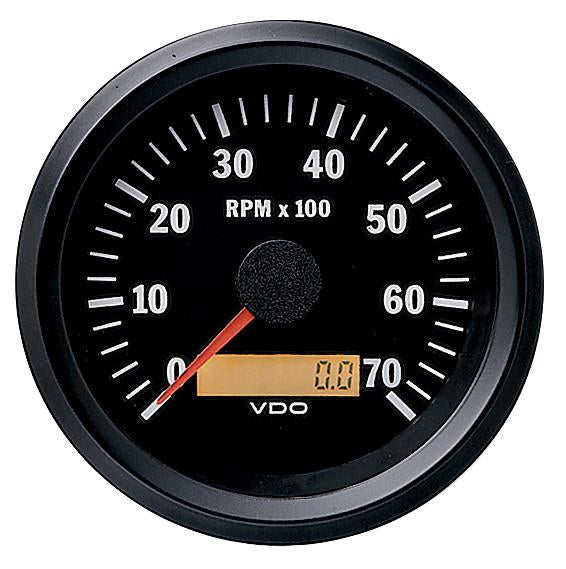Exactly how to Choose the Right Tachometer for Your Car or Motorbike
Exactly how to Choose the Right Tachometer for Your Car or Motorbike
Blog Article
The Value of a Tachometer in Keeping Track Of Engine Rate and Performance in Automotive Applications
In the world of vehicle design, the tachometer stands as a critical tool in the driver's arsenal, providing a straight window into the internal operations of a car's engine. Past its feature as a simple gauge of transformations per min (RPM), the tachometer offers as a crucial device for enthusiasts and specialists alike, using real-time insights right into engine performance and health.
Significance of Keeping Track Of Engine RPM
Checking engine RPM, or transformations per minute, is a crucial element of auto maintenance and efficiency assessment. Engine RPM straight associates with the rate at which the engine's crankshaft turns, showing exactly how promptly the engine is running.
Furthermore, checking engine RPM is vital for efficiency assessment in auto racing and high-performance cars. In recap, monitoring engine RPM is not just crucial for finding problems yet additionally for enhancing engine efficiency in various automotive applications.

Advantages of Real-Time Information
In auto applications, real-time data plays an important role in supplying instantaneous insights right into the performance and condition of the automobile. By continually monitoring different specifications such as engine rate, temperature, gas consumption, and much more, real-time information offers countless advantages that add to boosted effectiveness and security on the roadway.
Additionally, real-time information assists in performance optimization by giving prompt feedback on driving practices and engine effectiveness. Chauffeurs can change their actions in real-time based on this information to accomplish far better fuel economic climate and prolong the life-span of their lorry.

Additionally, real-time information plays a crucial function in modern-day vehicle diagnostics, making it possible for specialists to swiftly identify and attend to malfunctions. This causes lowered downtime, lower upkeep costs, and inevitably, boosted overall car reliability and long life (tachometer). By using the power of real-time information, auto stakeholders can make educated decisions that favorably influence both the efficiency and long life of the vehicle
Impact on Equipment Shifts
Efficient equipment changes in auto applications considerably influence total efficiency and driving experience. The tachometer plays a vital role in optimizing equipment shifts by offering real-time engine rate information to the driver. When approaching the redline on the tachometer, it indicates the chauffeur to upshift to stop over-revving the engine and triggering prospective damage. On the other hand, downshifting at the appropriate moment can aid maintain the engine in its power band, making sure responsive velocity when required.
Additionally, the tachometer aids in accomplishing smoother equipment shifts, particularly in hands-on transmissions. By checking engine speed, chauffeurs can execute equipment changes at the optimal RPM range, decreasing jerking activities and decreasing wear on the transmission elements. This accuracy in equipment changes not only enhances driving comfort but also adds to fuel efficiency.
Enhancing Fuel Efficiency
Offered the crucial role the tachometer plays in maximizing equipment shifts for performance and engine health and wellness, it directly adds to making the most of fuel efficiency in automotive applications. By supplying real-time feedback on engine rate, the tachometer aids vehicle drivers in preserving the most effective RPM array for fuel economic situation. When drivers regularly monitor the tachometer and adjust their driving practices appropriately, they can stay clear of unneeded fuel intake brought on by over-revving or carrying the engine.
Furthermore, the tachometer helps vehicle drivers identify the most fuel-efficient gear to be in at any kind of given moment, preventing the engine from working more difficult than needed. In final thought, the tachometer serves as an important tool in improving gas performance by promoting optimum driving practices and identifying areas for enhancement in the automobile's performance.

Making The Most Of Engine Durability
The tachometer's duty in keeping track of engine rate and efficiency contributes in making sure the durability of automobile engines. By utilizing my response the tachometer efficiently, motorists can optimize engine longevity via conscious RPM monitoring. Consistently revving an engine too high can result in excessive wear and tear on crucial elements, such as the pistons, valves, and bearings. With time, this can lead to decreased engine efficiency and potential malfunctions. Keeping track of the tachometer permits chauffeurs to remain investigate this site within the suggested RPM variety for their lorry, preventing unneeded this website strain on the engine and expanding its lifespan.

Verdict
To conclude, the tachometer plays a critical function in keeping an eye on engine speed and performance in automotive applications. By supplying real-time information on RPM, it allows for efficient gear changes, improved fuel efficiency, and taken full advantage of engine longevity. This tool is necessary for preserving ideal engine performance and ensuring the total performance of a car.
Report this page